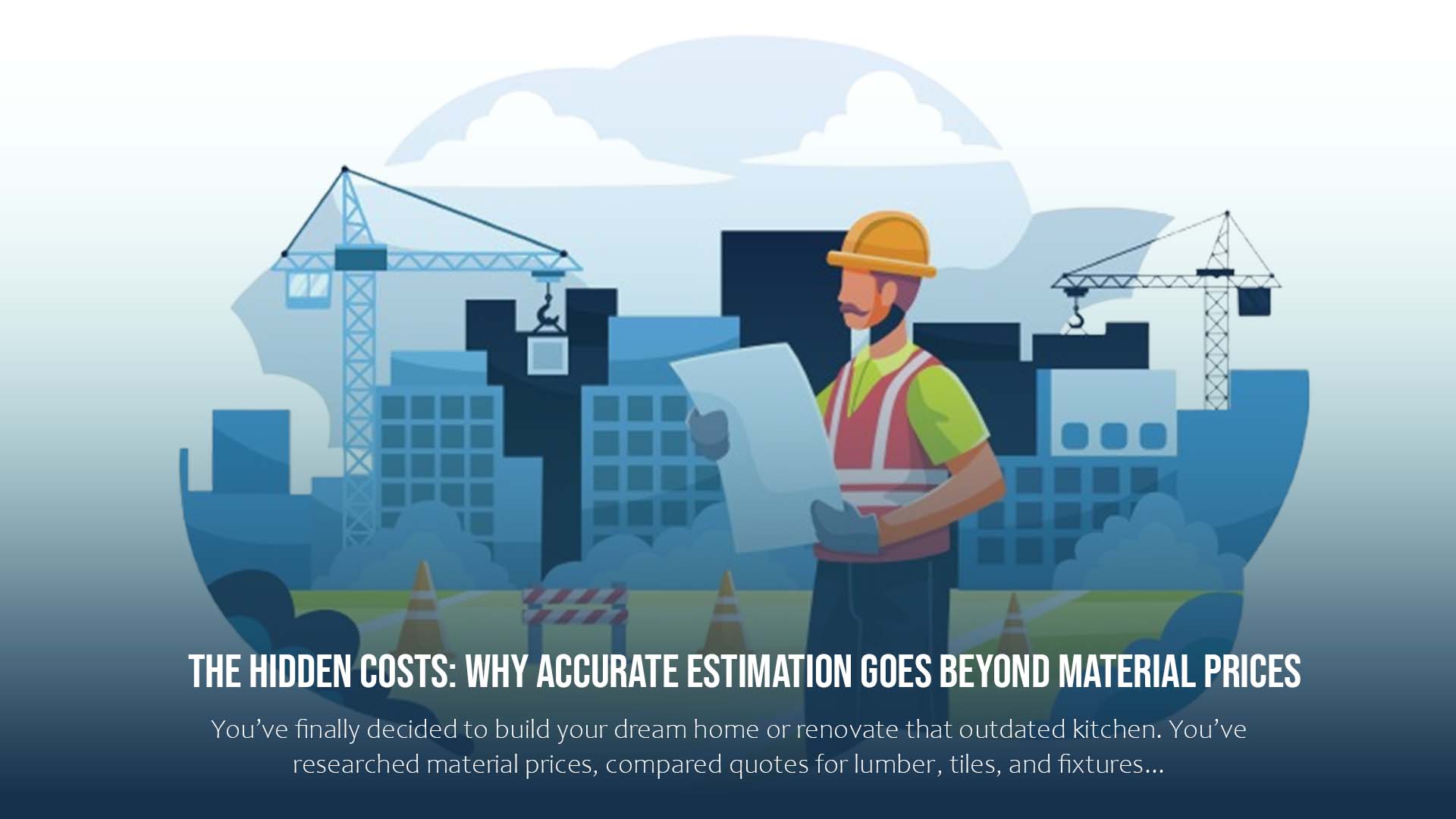You’ve finally decided to build your dream home or renovate that outdated kitchen. You’ve researched material prices, compared quotes for lumber, tiles, and fixtures, and even negotiated a deal with a supplier. Confident you’ve nailed the budget, you’re ready to break ground. But halfway through the project, costs start spiraling. Suddenly, you’re over budget, stressed, and wondering: “Where did I go wrong?”
The answer lies in the invisible iceberg beneath the surface of your project. Material costs are just the tip. Hidden beneath are labor fees, permits, delays, and surprises that can sink even the best-laid plans. Let’s uncover why accurate cost estimation requires looking beyond the price tag of bricks and mortar.

Labor Costs: More Than Just Hourly Wages
When most people think of labor, they picture workers clocking in and out. But labor expenses are far more complex. Here’s what often gets overlooked:
1.Skilled vs. Unskilled Labor
- Hiring a licensed electrician costs more than a general helper, but cutting corners here can lead to code violations or safety hazards.
- Specialized trades (plumbers, HVAC technicians) often charge premium rates, especially in high-demand areas.
2.Overtime and Delays
- If your project falls behind schedule, workers might need overtime to catch up. Those extra hours come with a 1.5x or even 2x hourly rate.
- Delays due to weather, material shortages, or miscommunication can stretch timelines and labor budgets.
3.Training and Safety
- Proper safety gear, certifications, and training programs add up. For example, OSHA compliance isn’t free.
- Accidents or injuries on-site can lead to costly lawsuits or insurance hikes.
Also Read: Top Benefits of Working with a Dedicated Estimation Firm
Permits and Paperwork: The Invisible Hurdles
Permits are the unsung villains of construction projects. They’re easy to forget but impossible to ignore. Here’s why:
1.Types of Permits You Might Need
- Building Permits: Required for structural changes, electrical work, or plumbing.
- Zoning Permits: Ensure your project complies with local land-use rules (e.g., fence height, property lines).
- Environmental Permits: Needed if your project impacts wetlands, trees, or wildlife.
2.The Time Tax
- Applying for permits can take weeks or months. In busy cities, approval delays are common.
- Revisions (if your plans are rejected) mean more waiting and paying your architect or engineer to redraw plans.
3.Compliance Costs
- Inspections aren’t free. Each phase of your project (foundation, framing, electrical) may require a paid inspection.
- Fail an inspection? Fixing errors (like improper wiring) adds labor and material costs.
Pro Tip:
Always ask your contractor, “Are permits included in your quote?” Many exclude them, leaving you to handle fees and paperwork.
Unforeseen Expenses: Expect the Unexpected
Even with perfect planning, surprises happen. Here are the most common budget-busters:
1: Site Preparation Surprises
- Hidden Damage: Rotting foundations, termite infestations, or outdated wiring lurk behind walls.
- Soil Issues: Rocky or unstable ground might require expensive excavation or reinforcements.
2: Weather and Environmental Factors
- Rain delays in outdoor projects can push timelines by weeks.
- Extreme temperatures may require special materials (e.g., frost-resistant concrete).
3: Design Changes
- “While we’re at it…” syndrome. Upgrading countertops or adding recessed lighting mid-project adds costs fast.
- Client indecision (“Should the door go here or there?”) wastes time and money.
Storytime:
Mike wanted to convert his attic into a home office. During demolition, contractors found asbestos insulation. Abatement costs? $5,000 not included in his original budget.
How to Avoid Budget Blowouts: 5 Practical Tips
1: Get Multiple Quotes Not Just for Materials
- Compare labor rates, permit handling fees, and contingency plans from different contractors.
- Ask for itemized estimates to see where your money’s going.
2: Build a Contingency Fund
- Rule of thumb: Add 10–20% to your total budget for surprises.
- If you don’t use it, great! You’ve got a head start on your next project.
3: Work with Professionals
- Hire experienced contractors who know local permit processes. They’ll anticipate delays and hidden costs.
- Architects and project managers can spot red flags in your plans early.
4: Plan for the Seasons
- Start outdoor projects in dry months to minimize weather delays.
- Order materials in advance to avoid price hikes or shortages.
5: Communicate Clearly and Stick to the Plan
- Avoid mid-project changes. Write a detailed scope of work and sign off on designs upfront.
- Hold weekly check-ins with your team to address issues before they escalate.
The Bottom Line: Knowledge is Power (and Savings)
Accurate estimation isn’t about predicting the future it’s about preparing for it. By accounting for labor complexities, permit pitfalls, and the inevitable surprises, you’ll build a budget that’s resilient, realistic, and ready for anything.
So next time you plan a project, remember: The true cost isn’t just what you see on the shelf. It’s the sum of a thousand little details and the wisdom to plan for them.
